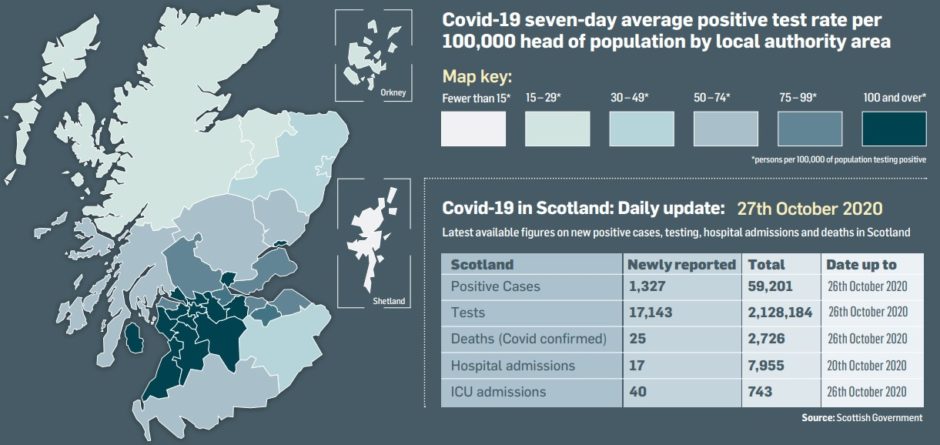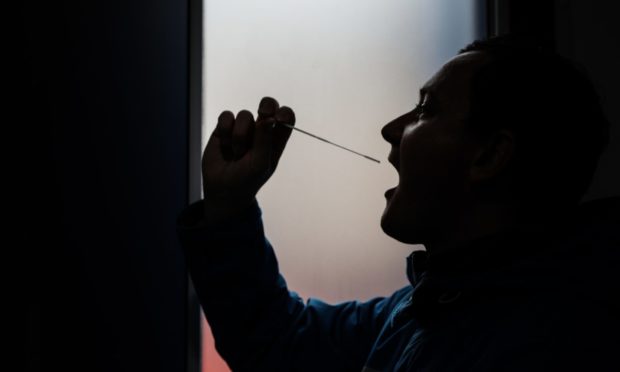More than three-quarters of Dundee’s neighbourhoods are coronavirus hotspots, according to new Scottish Government figures.
A day after First Minister Nicola Sturgeon acknowledged the city could be placed under level three coronavirus restrictions, it emerged 24 of the city’s 31 local areas have recorded high levels of infection in the last week.
The figures place most of the city in the red zone on a map showing Covid-19 infection rates by neighbourhood across Scotland.
Red means more than 100 people per 100,000 of the population have tested positive for Covid-19.
In Dundee, every neighbourhood except Barnhill, Broughty Ferry West, Caird Park, Douglas East, West End, Balgay and Western Edge are in the top level for infections.
More than a third of Fife’s neighbourhoods are also coloured red, including most of Levenmouth and Wemyss, parts of Kirkcaldy, Cardenden, Leslie and Newcastle.
In North East Fife, Elie, Colinsburgh and Largoward are red, along with Balmullo and Gauldry and Leuchars and Guardbridge.
High rates of infections have also been detected in parts of Angus, with Brechin West, Lunan, Monifieth West, Monikie, and South Angus all in the highest zone.
In Perth and Kinross, just six of the 35 neighbourhoods are in red zones, including the extensive Blair Atholl, Strathardle and Glenshee area, as well as Kinross, Letham, Muirton, Invergowrie and Longforgan.
The neighbourhoods referred to in the data are not limited to the individual towns and villages but include a much wider geographical area.
Across Tayside and Fife, 28 people have been admitted to hospital with Covid-19 in just the last week as infection rates continue to rise.
Daily figures show 43 people in Tayside are now being treated in hospital – 18 more than a week ago – while 28 people are in hospital in Fife, up 10 on last week.
The increase was revealed days after Fife’s top doctor said the NHS was bracing itself for a second wave of Covid-19 over the winter and urged people to stick to the rules.

Dr Chris McKenna said a continued surge in cases alongside the usual winter threats would pose an increasing challenge and affect hospitals’ ability to deliver routine healthcare.
His comments were reiterated by Fife’s health and social care spokesman David Graham on Tuesday.
He said the rising number of infections meant people had to do their utmost to follow the government’s guidance.
“No-one wants to see further restrictions, and in fact we want to see them reduced over time, but for that to happen the numbers need to be going in the right direction so I urge the people of Fife to stick with it to ensure we keep everyone safe,” he said.
Across Scotland, 59,201 people have tested positive for coronavirus since the start of the pandemic, including 3,838 people in Tayside and 2,255 in Fife.






